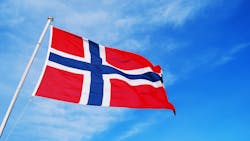NPD calls for greater focus on IOR, Barents Sea gas offshore Norway
Offshore staff
OSLO, Norway — The Norwegian Petroleum Directorate’s (NPD) Resource report 2022 estimates that remaining oil and gas reserves across the Norwegian Continental Shelf are similar to what the country has produced since 1972.
Kjersti Dahle Grov, acting director for technology, analysis and coexistence at the NPD, said, “Remaining resources, low unit costs, low CO2 intensity and a flexible gas infrastructure make Norway a competitive and long-term supplier of both oil and gas to Europe.”
The report adds that fields in production contain large remaining resources, with substantial potential for improved recovery to help offset decline. But this will require greater investment in improved recovery and maturing existing discoveries for development.
After 2030, a steadily rising proportion of production will have to come from undiscovered resources, the report adds, with smaller discoveries accounting for much of this, producible through spare capacity in offshore infrastructure.
But to slow the anticipated overall decline in production, bigger discoveries will be needed than those being made today—and the potential for these is greater in frontier areas that are either little explored or not yet opened for exploration.
The NPD estimates that Norwegian exploration activity over the past two decades has yielded an overall net income of more than NOK3,000 billion ($309.86 billion), with exploration seen as profitable in all areas of the NCS.
At the end of last year, 36 companies were active on the shelf, down from the peak of 56 in 2013, and this is in part due to mergers and acquisitions. The mid-size players are said to have become increasingly important to the continued development of the NCS.
Gas accounts for more than half the estimated remaining resources in opened areas of the NCS, with around two-thirds of undiscovered gas resources thought to lie beneath the Barents Sea, half of these probably in still unopened areas.
However, at present, the gas liquefaction plant at Melkøya outside Hammerfest provides the only opportunity to deliver gas from this far northern part of the NCS, and gas from Snøhvit will fill all the capacity at that facility for some time to come.
Developing oil fields in the region with associated gas also becomes more demanding. Unfortunately, the geology in the opened areas of the Barents Sea means that new finds will probably not be large enough to support new export capacity on a stand-alone basis.
This situation could be resolved if the industry was prepared to coordinate resources. Studies by the NPD and offshore trunklines operator Gassco in 2020 showed that developing proven resources could make it socioeconomically profitable to increase gas export capacity from this area, with a growing market in Europe.
If further resources are proven, they could also be used to produce virtually emission-free blue hydrogen to support Europe’s energy transition.
The Norwegian government is studying whether the gas infrastructure, with some adaptations, could transport both hydrogen and CO2.
“To maintain the competitiveness of the NCS, it is important that the industry has predictable access to prospective acreage,” concluded Dahle Grov. “Increased technology development and measures, which can keep down unit costs and further reduce the climate footprint, will also be significant.”
08.25.2022
